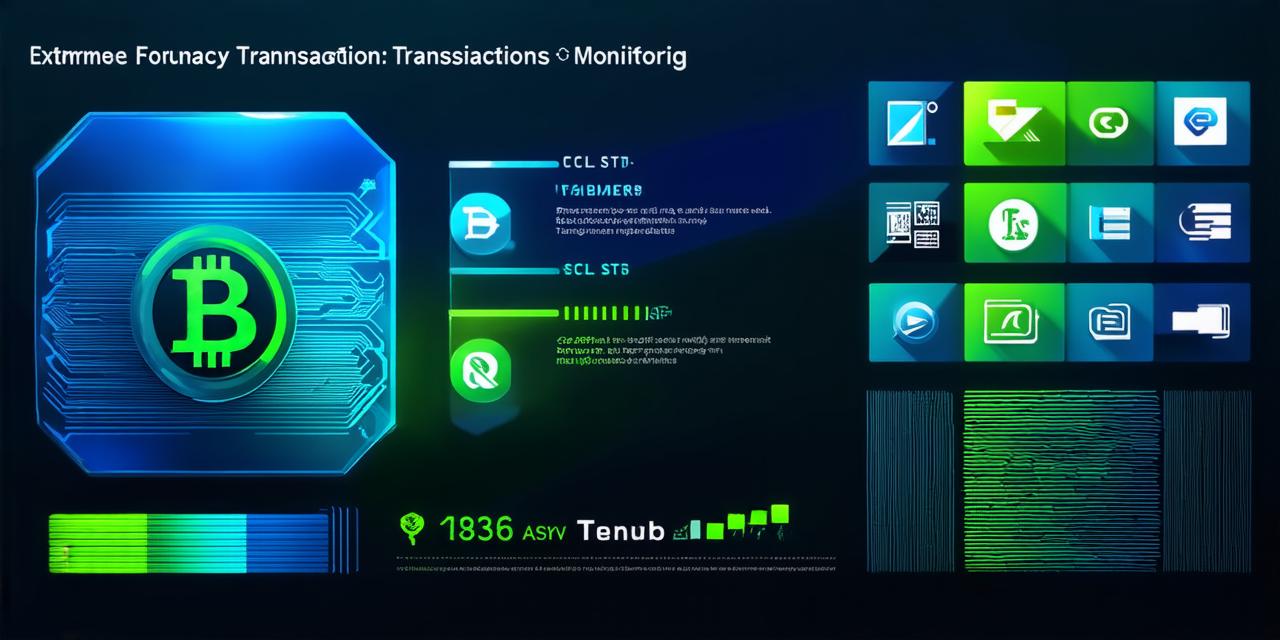Monitoring cryptocurrency transactions is crucial for crypto developers who want to understand their business and manage risks. In this guide, we will explore the best practices for monitoring cryptocurrency transactions and how to do it effectively.
Whether you’re a seasoned developer or just starting out in the industry, this guide will provide you with valuable insights and tips on how to monitor cryptocurrency transactions effectively.
1. Choosing the Right Monitoring Tool
The first step in monitoring cryptocurrency transactions is choosing the right tool. There are many tools available on the market, each with its own set of features and capabilities. Some popular options include Blockchair, CoinGecko, and TradingView. When selecting a tool, it’s important to consider your specific needs and budget. Consider factors such as the level of detail you need, the number of transactions you expect to monitor, and the level of support available from the tool provider.
2. Setting Up Alerts
Once you have chosen your monitoring tool, the next step is to set up alerts. Alerts are notifications that let you know when certain events occur, such as a large transaction or a sudden price drop. This can help you react quickly and make informed decisions. Most monitoring tools allow you to customize your alerts to suit your needs. You can choose the types of alerts you want to receive, the frequency at which they are sent, and the threshold for triggering an alert.
3. Tracking Transactions in Real-Time
Real-time tracking is crucial for crypto developers who need to keep up with the latest transactions. Most monitoring tools provide real-time tracking, allowing you to see transactions as they occur. This can help you identify potential issues and make informed decisions quickly. Real-time tracking also allows you to monitor market trends and adjust your investment strategy accordingly.
4. Analyzing Transaction Data
Analyzing transaction data is another important aspect of monitoring cryptocurrency transactions. By analyzing data such as transaction volume, price trends, and market sentiment, crypto developers can gain valuable insights into their business and make informed decisions. Most monitoring tools provide detailed analytics that allow you to analyze transaction data in real-time. You can use this information to identify patterns and trends, track performance over time, and make data-driven decisions.
5. Protecting Your Assets
Monitoring cryptocurrency transactions is also essential for protecting your assets. By monitoring transactions closely, you can identify potential security threats and take action before they cause damage. This can help you safeguard your investments and prevent fraudulent activity. It’s important to stay up-to-date with the latest security measures and best practices in the industry to protect your assets effectively.
6. Staying Up-to-Date with Regulations
Regulatory compliance is another important aspect of monitoring cryptocurrency transactions. Cryptocurrencies are highly regulated, and staying up-to-date with regulations is essential for avoiding legal issues. Most monitoring tools provide information on regulatory changes and how they may impact your business. It’s important to stay informed about regulatory developments and adjust your strategy accordingly.

7. Summary
Monitoring cryptocurrency transactions is essential for crypto developers who want to succeed in the industry. By choosing the right tool, setting up alerts, tracking transactions in real-time, analyzing transaction data, protecting your assets, and staying up-to-date with regulations, you can gain valuable insights into your business and make informed decisions. Remember to always prioritize security and regulatory compliance when monitoring cryptocurrency transactions. With the right tools and strategies in place, you can minimize risks and maximize opportunities in the crypto market.
